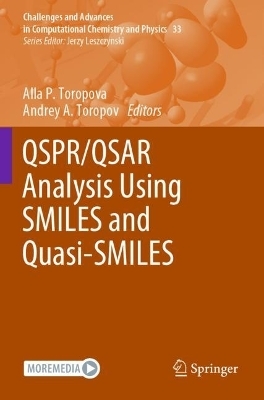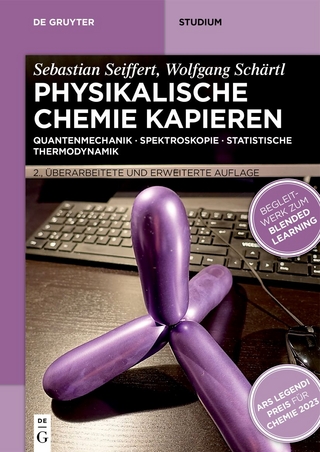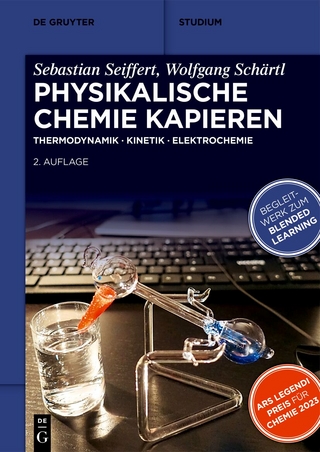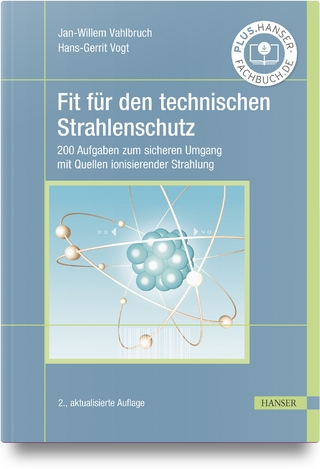
QSPR/QSAR Analysis Using SMILES and Quasi-SMILES
Springer International Publishing (Verlag)
978-3-031-28403-8 (ISBN)
Alla P. Toropova is a researcher from Istituto di Ricerche Farmacologiche Mario Negri IRCCS, Milano, Italy. Her main direction of research activity is establishing quantitative structure-property/activity relationships (QSPRs/QSARs) for inorganic and metalorganic compounds. She has published about 280 papers in international journals dedicated to QSPR/QSAR analysis. She took part in the development and evolution of so-called optimal descriptors that were calculated with a simplified molecular input-line entry system (SMILES). In addition, she collaborated on developing a new approach to the QSPR/QSAR analysis based on so-called quasi-SMILES. She is the website developer(http://www.insilico.eu/coral) for the CORAL software that implements conceptions of the Monte Carlo optimization of optimal descriptors calculated with SMILES and quasi-SMILES.
Andrey A. Toropov is a researcher from Istituto di Ricerche Farmacologiche Mario Negri IRCCS, Milano, Italy. His research activity is dedicated to quantitative structure-property/activity relationships (QSPRs/QSARs). He is co-author of about 360 papers in international journals devoted to QSPR/QSAR analysis. He is the developer of CORAL software that is applied to building up QSPR/QSAR models for different endpoints. His current activity is dedicated to developing the system of quasi-SMILES as input data for the CORAL software (http://www.insilico.eu/coral). It can become a new approach for building up QSPR/QSAR for polymers, peptides, and nanomaterials.
Part I - Theoretical conceptions.- Fundamentals of mathematical modeling of chemicals through QSPR/QSAR.- Molecular descriptors in QSPR/QSAR modeling.- Application of SMILES to cheminformatics and generation of optimum SMILES descriptors using CORAL software.- Part II - SMILES based descriptors.- All SMILES Variational Autoencoder for Molecular Property Prediction and Optimization.- SMILES based bioactivity descriptors to model the anti-Dengue virus activity: A case study.- Part III - SMILES for QSPR/QSAR with optimal descriptors.- QSPR models for prediction of redox potentials using optimal descriptors.- Building up QSPR for polymers endpoints by using SMILES-based optimal descriptors.- Part IV - Quasi-SMILES for QSPR/QSAR.- Quasi-SMILES based QSPR/QSAR modeling.- Quasi-SMILES Based Mathematical Model for the Prediction of Percolation Threshold for Conductive Polymer Composites.- On the possibility to build up the QSAR model of different kinds of inhibitory activity for a large list of Human Intestinal Transporter using quasi-SMILES.- Quasi-SMILES as a tool for peptide QSAR modelling.- Part V - SMILES and quasi-SMILES for QSPR/QSAR.- SMILES and quasi-SMILES descriptors in QSAR/QSPR modeling of diverse materials properties in safety and environment application.- SMILES and quasi-SMILES in QSAR Modeling for Prediction of Physicochemical and Biochemical Properties.- Part VI - Possible ways of nano-QSPR/nano-QSAR evolution.- The CORAL software as a tool to develop models for nanomaterials' endpoints.- Employing Quasi-SMILES notation in development of nano-QSPR models for nanofluids.- Part VII - Possible ways of QSPR/QSAR evolution in the future.- On complementary approaches of assessing the predictive potential of QSPR/QSAR-models.- CORAL: Predictions of Quality of Rice based on Retention index using a combination of Correlation intensity index and Consensus modelling.
| Erscheinungsdatum | 12.06.2024 |
|---|---|
| Reihe/Serie | Challenges and Advances in Computational Chemistry and Physics |
| Zusatzinfo | XVIII, 467 p. 83 illus., 51 illus. in color. |
| Verlagsort | Cham |
| Sprache | englisch |
| Maße | 155 x 235 mm |
| Themenwelt | Naturwissenschaften ► Chemie ► Physikalische Chemie |
| Schlagworte | Monte Carlo Method • Nano-QSPR/QSAR • QSPR/QSAR • Quasi-SMILES • smiles |
| ISBN-10 | 3-031-28403-8 / 3031284038 |
| ISBN-13 | 978-3-031-28403-8 / 9783031284038 |
| Zustand | Neuware |
| Informationen gemäß Produktsicherheitsverordnung (GPSR) | |
| Haben Sie eine Frage zum Produkt? |
aus dem Bereich


